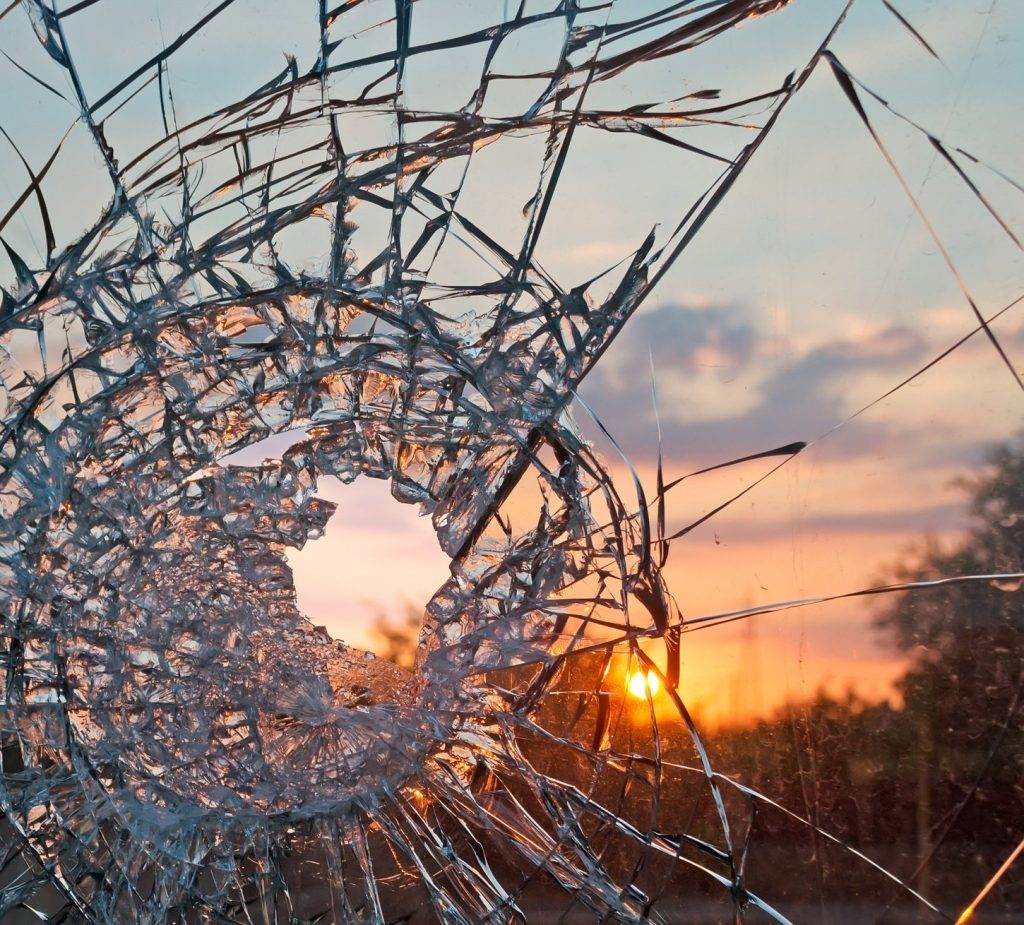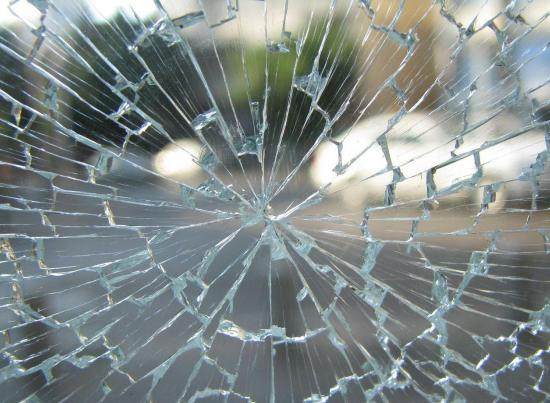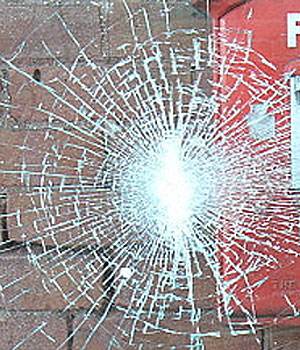In our quest for answers, we often stumble upon intriguing questions that pique our curiosity. One such enigma that leaves us restless is the age-old query: what tool can break bullet proof glass? As we delve into the realms of science and technology, we embark on a fascinating journey to unravel the mysterious power capable of shattering the impenetrable shield that guards against even the most formidable threats. Join us as we unveil the unexpected tool that holds the key to cracking this seemingly indestructible barrier.
This image is property of qph.cf2.quoracdn.net.
Different Types of Bullet Proof Glass
Bullet proof glass is an essential component in various industries, ranging from military and law enforcement to automotive and construction. It is designed to withstand the impact of bullets and projectiles, ensuring the safety of individuals and valuable assets. There are different types of bullet proof glass available, each offering unique features and levels of protection.
1. Laminated Glass
Laminated glass is one of the most commonly used types of bullet proof glass. It consists of multiple layers of glass bonded together with a strong interlayer material, typically made of polyvinyl butyral (PVB). The interlayer acts as a cushion, absorbing the energy of the bullet and preventing it from penetrating the glass fully.
Laminated glass offers excellent clarity and optical properties, making it suitable for applications where visibility is crucial. It can be customized to meet specific requirements, such as adding tint for privacy or incorporating other features like UV protection or sound insulation.
2. Polycarbonate Glass
Polycarbonate glass, also known as armored glass or transparent armor, is another popular choice for bullet proof applications. It is made from strong and impact-resistant polycarbonate material, which is often layered with acrylic or glass to enhance its strength.
Polycarbonate glass offers exceptional durability and resistance to impact, making it a suitable choice for high-risk environments. It is commonly used in bank teller windows, security booths, and military vehicles. Despite its strength, polycarbonate glass may be susceptible to scratching and requires regular maintenance to retain its optimal clarity.
3. Acrylic Glass
Acrylic glass, commonly referred to as Plexiglas or acrylic, is a lightweight and shatter-resistant material often used as a bullet proof glass alternative. It is made from polymethyl methacrylate (PMMA) and offers excellent optical clarity.
Acrylic glass provides a good level of bullet resistance, although it may not offer the same level of protection as laminated or polycarbonate glass. It is often used in lower-risk environments or where weight is a concern, such as in the aerospace industry or for bullet-resistant windows in residential buildings.
Factors Determining the Strength of Bullet Proof Glass
The strength of bullet proof glass depends on various factors that contribute to its ability to resist bullets and projectiles. Understanding these factors is crucial in determining the appropriate type and thickness of glass for specific applications.
1. Glass Thickness
The thickness of the glass plays a significant role in the level of protection provided by bullet proof glass. Thicker glass is generally more resistant to bullets and projectiles, as it provides a greater barrier for them to penetrate. However, increasing the glass thickness also adds weight and may impact visibility, making it necessary to strike a balance between protection and practicality.
2. Layered Construction
Bullet proof glass often consists of multiple layers bonded together. The layered construction enhances the glass’s ability to absorb and dissipate the energy of the bullet, preventing it from penetrating fully. Each layer of the glass contributes to its overall strength, and the number and arrangement of layers can be customized based on the desired level of protection.
3. Interlayer Material Composition
The interlayer material, sandwiched between the layers of glass, plays a crucial role in the overall strength and performance of bullet proof glass. The interlayer absorbs the impact energy and helps distribute it across the glass surface, preventing the bullet from penetrating. Different materials, such as polyvinyl butyral (PVB) or thermoplastic urethane (TPU), offer varying levels of strength and performance.
Traditional Methods of Breaking Bullet Proof Glass
While bullet proof glass is designed to withstand the impact of bullets and projectiles, there are traditional methods that can be used to break it under certain circumstances. These methods, although often challenging and dangerous, have been employed by criminals and in controlled testing environments.
1. Physical Force
The application of physical force, such as hitting or kicking the glass, can potentially cause it to break. However, due to the glass’s strength and layered construction, significant force is usually required, and success is not guaranteed. It is a time-consuming and physically demanding approach that may not be feasible in many situations.
2. Explosives
Explosives can be used to break bullet proof glass by generating a high-pressure shock wave that can shatter the glass. However, this method is extremely dangerous and should only be performed by trained professionals in controlled environments. The risks associated with explosives make them an impractical choice for most scenarios and limit their use to specialized applications.
Modern Tools Used to Break Bullet Proof Glass
Advancements in technology have led to the development of more sophisticated tools and techniques for breaking bullet proof glass. These methods offer greater precision, efficiency, and safety compared to traditional methods, making them a preferred choice in various scenarios.
1. High-Pressure Water Jet
One modern tool used to break bullet proof glass is the high-pressure water jet. This method involves directing a stream of water at an extremely high velocity towards the glass surface. The force of the water can exert enough pressure to break the glass.
The high-pressure water jet is effective in breaking bullet proof glass due to its ability to generate immense force without causing heat damage or creating sparks. It is a relatively safe and non-destructive method that allows for controlled cutting and breaking of the glass. However, it requires specialized equipment and skilled operators to ensure successful results.
2. Thermal Lance
The thermal lance is another modern tool used for breaking bullet proof glass. It consists of a pipe filled with metal wires and installed with an oxygen supply. When ignited, the oxygen reacts with the metal, creating intense heat.
The thermal lance works by heating the glass surface to an extremely high temperature, causing it to weaken and eventually break. This method can be effective in breaking bullet proof glass, particularly if time constraints are a factor. However, it requires careful handling due to the high-temperature environment and the potential for heat-related injuries.
3. Diamond-Tipped Cutting Tools
Diamond-tipped cutting tools, such as diamond saws or drills, are commonly used in cutting and breaking bullet proof glass. The hardness and durability of diamonds allow for efficient and precise cutting through the glass material.
These cutting tools work by grinding or sawing through the glass, gradually creating a fracture line that leads to the glass’s breakage. Diamond-tipped tools are highly effective in breaking bullet proof glass, providing controlled and accurate results. However, they require specialized equipment and skilled operators to ensure safe and successful outcomes.

This image is property of www.wikihow.com.
High-Pressure Water Jet
Introduction and Working Mechanism
The high-pressure water jet is a modern tool used for breaking bullet proof glass. It operates by directing a stream of water at an extremely high velocity towards the glass surface. The force of the water can exert enough pressure to break the glass.
The high-pressure water jet works by focusing a narrow stream of water onto a specific point of the glass surface. The water is pressurized to a level that allows it to overcome the glass’s strength and cause it to fracture. The continuous application of the water stream can lead to the complete breakage of the glass.
Advantages and Disadvantages
The high-pressure water jet offers several advantages when breaking bullet proof glass. Firstly, it is a non-destructive method that does not generate sparks or heat, minimizing the risk of fire or damage to surrounding materials. It is also relatively safe for operators, as there is no direct contact with sharp tools or high temperatures.
Additionally, the high-pressure water jet allows for controlled cutting and breaking of the glass. The operator can precisely direct the water stream to the desired location, enabling accurate and efficient results. The method also offers the flexibility to cut through different glass thicknesses and compositions.
However, high-pressure water jetting does have some limitations. It requires specialized equipment and skilled operators to ensure successful outcomes. The method may not be suitable for situations where immediate or forceful breakage is required, as it may take longer to penetrate thicker and stronger glass. Additionally, the water jetting process can generate noise and produce a significant amount of water waste, which should be taken into consideration during its implementation.
Thermal Lance
Introduction and Working Mechanism
The thermal lance is a modern tool used for breaking bullet proof glass by heating it to a high temperature. It consists of a pipe filled with metal wires and installed with an oxygen supply. When ignited, the oxygen reacts with the metal, creating intense heat.
The thermal lance works by directing the heat generated by the igniting metal wires onto the glass surface. The heat causes the glass to weaken and eventually break. It is a quick and efficient method, particularly in situations where time constraints are a factor.
Advantages and Disadvantages
One of the main advantages of using a thermal lance for breaking bullet proof glass is its ability to generate high temperatures quickly. This enables rapid weakening and breakage of the glass. The method is also effective regardless of the glass thickness or composition.
However, there are several disadvantages associated with the thermal lance. Firstly, it requires careful handling due to the high-temperature environment it creates. Operators must take appropriate safety precautions to prevent injuries or accidents. Additionally, the thermal lance may generate noise and produce sparks, which can be a concern in certain environments.
Furthermore, the thermal lance is a consumable tool, as the metal wires are burnt during the process and need replacement after each use. This adds to the cost and maintenance requirements of using this method.
This image is property of qph.cf2.quoracdn.net.
Diamond-Tipped Cutting Tools
Introduction and Working Mechanism
Diamond-tipped cutting tools, such as diamond saws or drills, are commonly used in breaking bullet proof glass. These tools consist of a cutting edge embedded with industrial-grade diamonds, known for their hardness and durability.
When using diamond-tipped cutting tools to break bullet proof glass, the diamonds grind or saw through the glass material. The cutting edge is applied to the glass surface, and with minimal pressure and rotational movement, it gradually creates a fracture line. This fracture line weakens the glass, eventually leading to its breakage.
Advantages and Disadvantages
Diamond-tipped cutting tools offer several advantages when breaking bullet proof glass. Firstly, they provide precise and controlled cutting capabilities. The skilled operator can accurately guide the tool and create clean cuts or fractures as required. The method is effective in breaking glass of varying thicknesses and compositions.
Moreover, diamond-tipped cutting tools generate minimal noise and vibration, making them suitable for applications where these factors are of concern. They also produce little debris and dust compared to other methods, contributing to a cleaner working environment.
However, using diamond-tipped cutting tools may have some limitations. The process can be time-consuming, particularly when dealing with thicker or stronger glass. It also requires skilled operators with adequate training and knowledge of the cutting techniques. Additionally, the initial cost of the diamond-tipped tools and the need for regular maintenance and replacement should be considered.
Limitations and Challenges of Breaking Bullet Proof Glass
While various methods and tools can be used to break bullet proof glass, there are certain limitations and challenges that should be taken into account.
1. Time Constraints
Breaking bullet proof glass using traditional or modern methods can be a time-consuming process, depending on the glass’s thickness and composition. In emergency situations or when time is critical, the chosen method must be able to provide quick and efficient results.
2. Safety Precautions
Breaking bullet proof glass, regardless of the method employed, poses inherent risks. Operators must take appropriate safety precautions to protect themselves from potential injuries, especially when using tools that generate high temperatures or require specialized handling.
3. Noise and Vibration Issues
Breaking bullet proof glass can generate noise and vibrations, which may be undesirable in certain environments or situations. The level of noise and vibrations should be carefully assessed and mitigated as needed.

This image is property of ballistiglass.com.
Conclusion
Bullet proof glass plays a crucial role in providing protection and ensuring the safety of individuals and valuable assets in various industries. Understanding the different types of bullet proof glass available and the factors that determine their strength is essential in selecting the most suitable option for specific applications.
While traditional methods such as physical force or explosives can be used to break bullet proof glass, modern tools offer more precision, efficiency, and safety. The use of high-pressure water jets, thermal lances, and diamond-tipped cutting tools provides effective alternatives for breaking bullet proof glass in controlled and controlled environments.
However, it is important to consider the limitations and challenges associated with breaking bullet proof glass. Time constraints, safety precautions, and noise and vibration issues must be carefully managed to ensure successful outcomes.
In conclusion, the choice of method for breaking bullet proof glass depends on various factors, including the level of protection required, time constraints, and safety considerations. By understanding the available options and their advantages, disadvantages, and working mechanisms, professionals can make informed decisions to effectively break bullet proof glass when necessary.





